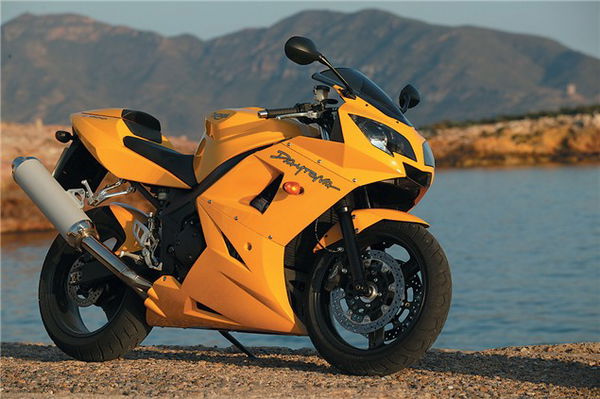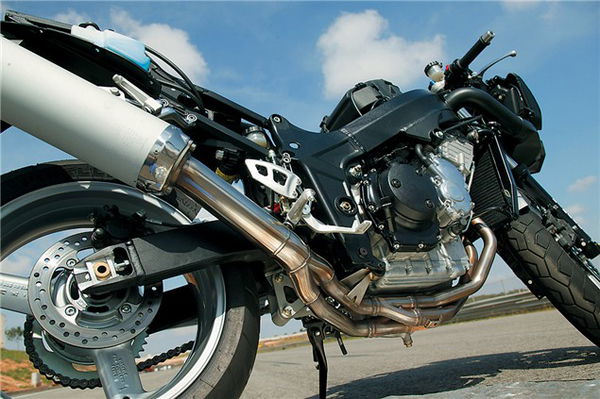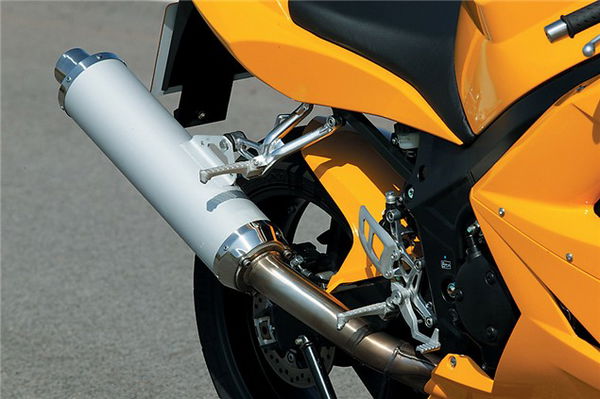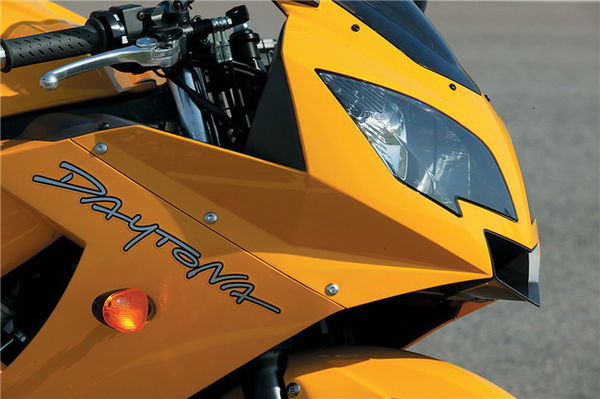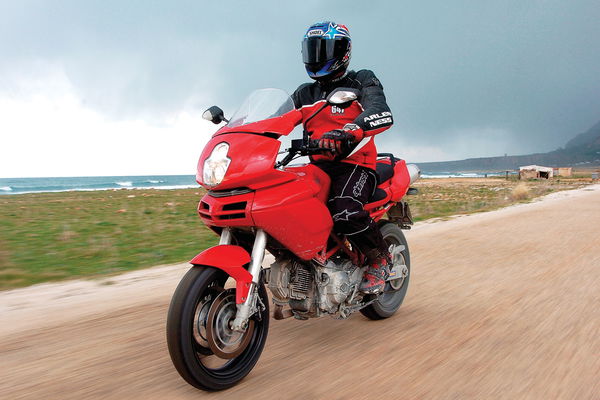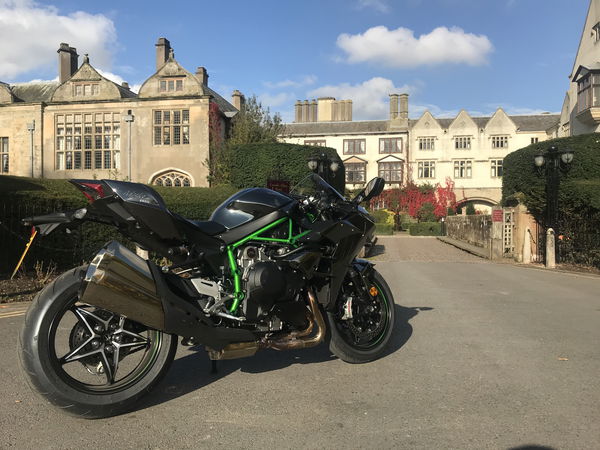Second chance: Triumph Daytona 600
Expensive new but affordable now, Jon Urry has a second look at Triumph's sporting middleweight

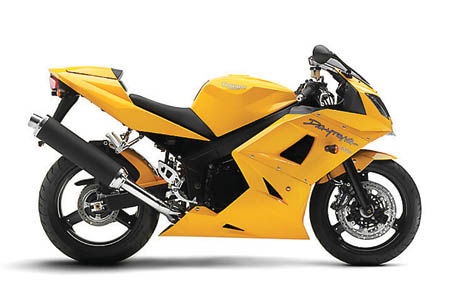
|
WHAT A DIFFERENCE a few years could have made. If Triumph had launched the Daytona 600 just two years earlier things could have been very different. It was so nearly ahead of its time in many ways, but unfortunately in 2003 when it was launched Kawasaki unveiled the first of the radically styled ZX-6Rs and Honda unleashed the CBR600RR. Balls.
Having learnt its lesson the hard way with the dreadful TT600, Triumph put a lot more effort into the Daytona 600. The styling was radical, the chassis sorted and the engine and fuel injection worked together in near perfect unison. Niall first rode the bike on track in Spain and declared it was a British supersports bike that could take on the Japanese. So why did Triumph kill it after just three years?
It all came down to money. In the early noughties Triumph were fixated with beating the Japanese, which a small company in Hinckley simply couldn't do. It was in 2003 that that Japanese started throwing everything at the 600 class. Slipper clutches, radial brakes, lap timers, titanium wotsits, you name it. Triumph just couldn't keep up, they weren't big enough to absorb the astronomical costs of constant development that was required to be competitive. Which is why in 2006 it took a different route and create its own niche market with the Daytona 675 triple.
Unfortunately it was the Daytona's less-than-perfect history that kept the bike from appealing to the mainstream biker masses. Which was their loss.
Okay, on track the CBR, ZX-6R and GSX-R600 of that era are better machines, but on the road the Daytona is King. Triumph always gets it right when it comes to road ability and the Daytona 600 is no exception. It's physically a lot larger and roomier than the competition and is a great practical bike. You can easily take one touring (I did the whole length of Spain on a Daytona in one day) and the riding position is far more relaxed than any other 600.
Although on-track the soft suspension limits its ability, on the road it's a blessing. A series of bumps won't upset a Daytona like they will a ZX-6R and your wrists won't be crying out for mercy as they will be on a CBR600RR. And you don't have to rev it to get to where you want to be going.
While Kawasaki cheated with a big-bore engine to give the ZX-6R grunt the Honda and Yamaha of 2003 were pure rev-monsters, lacking in real midrange. Not so with the Daytona. Although it wasn't as strong as the Kawasaki the Daytona's engine makes a decent amount of mid-range and has a genuine 100 horsepower, which is more than enough for road use in a bike that only weighs 165kg.
It does have its bad points, however. The brakes aren't as sharp as the Japanese competition's and can fade during hard track use (not a huge drama for road-riders, mind), the gearbox is pretty horrible and crunches and gnashes its teeth, plus the finish is a little suspect. But for a different looking inline four that is a great day-to-day road bike the Daytona will certainly win over most riders. The best model to go for is the 650 but the 600 is virtually identical, just a bit less grunty.
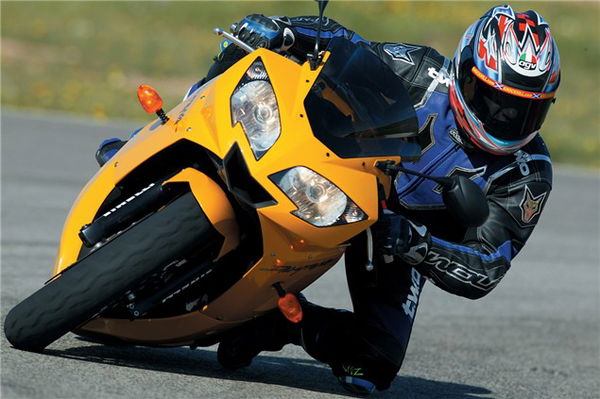
What a difference a few years could have made. If Triumph had launched the Daytona 600 just two years earlier things could have been very different. It was so nearly ahead of its time in many ways, but unfortunately in 2003 when it was launched Kawasaki unveiled the first of the radically styled ZX-6Rs and Honda unleashed the CBR600RR. Balls.
Having learnt its lesson the hard way with the dreadful TT600, Triumph put a lot more effort into the Daytona 600. The styling was radical, the chassis sorted and the engine and fuel injection worked together in near perfect unison. Niall first rode the bike on track in Spain and declared it was a British supersports bike that could take on the Japanese. So why did Triumph kill it after just three years?
It all came down to money. In the early noughties Triumph were fixated with beating the Japanese, which a small company in Hinckley simply couldn't do. It was in 2003 that that Japanese started throwing everything at the 600 class. Slipper clutches, radial brakes, lap timers, titanium wotsits, you name it. Triumph just couldn't keep up, they weren't big enough to absorb the astronomical costs of constant development that was required to be competitive. Which is why in 2006 it took a different route and create its own niche market with the Daytona 675 triple.
Unfortunately it was the Daytona's less-than-perfect history that kept the bike from appealing to the mainstream biker masses. Which was their loss.
Okay, on track the CBR, ZX-6R and GSX-R600 of that era are better machines, but on the road the Daytona is King. Triumph always gets it right when it comes to road ability and the Daytona 600 is no exception. It's physically a lot larger and roomier than the competition and is a great practical bike. You can easily take one touring (I did the whole length of Spain on a Daytona in one day) and the riding position is far more relaxed than any other 600.
Although on-track the soft suspension limits its ability, on the road it's a blessing. A series of bumps won't upset a Daytona like they will a ZX-6R and your wrists won't be crying out for mercy as they will be on a CBR600RR. And you don't have to rev it to get to where you want to be going.
While Kawasaki cheated with a big-bore engine to give the ZX-6R grunt the Honda and Yamaha of 2003 were pure rev-monsters, lacking in real midrange. Not so with the Daytona. Although it wasn't as strong as the Kawasaki the Daytona's engine makes a decent amount of mid-range and has a genuine 100 horsepower, which is more than enough for road use in a bike that only weighs 165kg.
It does have its bad points, however. The brakes aren't as sharp as the Japanese competition's and can fade during hard track use (not a huge drama for road-riders, mind), the gearbox is pretty horrible and crunches and gnashes its teeth, plus the finish is a little suspect. But for a different looking inline four that is a great day-to-day road bike the Daytona will certainly win over most riders. The best model to go for is the 650 but the 600 is virtually identical, just a bit less grunty.


